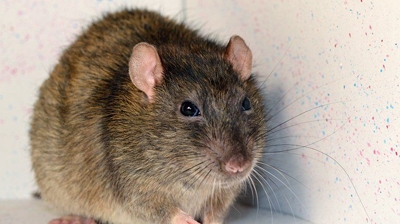
Spider Identification & Prevention
What You Need To Know About Spiders
Spiders are arachnids belonging to a certain class of arthropods that includes scorpions, mites, and ticks. There are over 45,000 known species of spiders, and they are distinguishable from other insects as they have eight legs instead of six.

Frequently Asked Questions About Spiders
Have questions? We are here to help. Still have questions or can't find the answer you need? Give us a call at 623-321-2992 today!
-
What are spiders?
Here are some more identifying features to help you in your spider detection efforts:
Spiders range in size from tiny species measuring around 1/64 of an inch to large species measuring over 3 1/2 inches. (Female spiders are larger than male spiders.)
A spider's body is divided into the cephalothorax and the abdomen, while most insects have three body sections.
A spider's legs are attached to its cephalothorax, which includes the stomach and the brain.
Although some spiders prefer to live indoors, many don't, and when spiders get into our homes, they can spread quickly and cause a widespread infestation.
-
Are spiders dangerous?
One of the most common questions customers ask is what sort of danger they're in. When it comes to spiders, there are a few risks to consider; however, for the most part, spiders do not pose a real threat to you or your Arizona property.
There are, of course, a few exceptions, such as venomous species like black widow and brown recluse spiders. These two species are the most dangerous spider species around. Brown recluse venom can cause death to your skin and tissues, and black widows have a toxin that can poison the nerves. Because of these more severe reactions, one should take these species more seriously than common house spiders.
-
What do spiders eat?
When it comes to a spider's diet, they primarily feed on hibernating insects and common indoor pests, such as crickets, grasshoppers, ants, flies, earwigs, cockroaches, mosquitoes flies, fleas, and moths. As spiders follow their food source, you'll generally find them wherever they can locate their next meal. So, if you see insects or other pest activity, there are likely spiders right behind them, ready to start feeding.
-
How do I get rid of spiders?
Depending on the specific species, spiders can pose a threat. Regardless of the species, however, it's safe to say that spiders aren't welcome in our homes and why taking proactive measures is often the best way to get ahead of spider infestations.
If you want to protect your home and loved ones from a spider infestation, here are some helpful, proactive practices to implement around the house:
Address any moisture and drainage issues.
Apply eucalyptus spray around the perimeter to deter spiders.
Check for cracks and crevices around the structure.
Examine your weather stripping and replace it if damaged.
Install/inspect window screens and door sweeps.
Keep landscaping well-trimmed and neat.
Keep other bugs away from home.
Keep trash outside in tightly sealed containers.
Keep vegetation at least five feet from the structure.
Maintain cleanliness and reduce clutter around the house.
Properly store food and trash in airtight containers.
Reduce excess moisture around the property.
Replace outside bulbs with yellow, insect-resistant bulbs.
Seal up potential entry points around the property.
Sweep away any cobwebs you find on the property.
Use caulk or foam to seal up cracks and crevices.
Use cedar products and cedar mulch to deter spiders.
While these prevention tips can certainly help minimize your exposure to spiders, the truth is that none of them are entirely effective on their own. If you want complete protection against spider activity, we highly recommend securing professional spider control and prevention services.
The team at H&N Pest Control is here to help. Get in touch with us today to learn more about our spider treatments and prevention services, and we'll start the process immediately.





